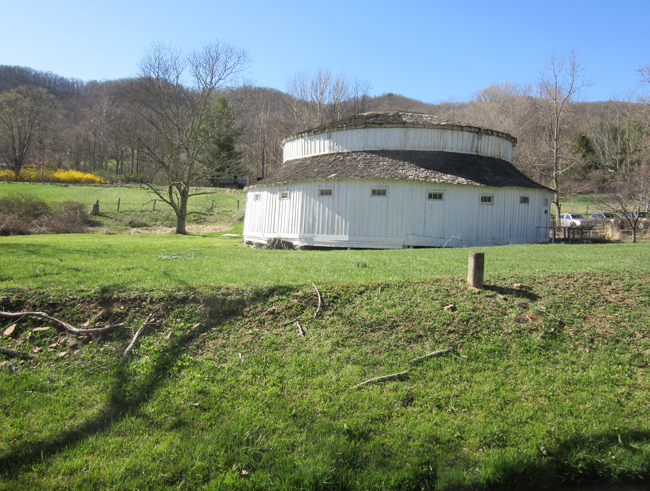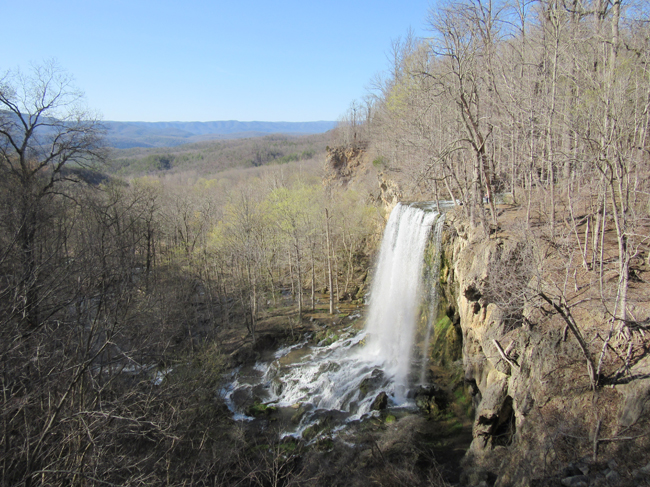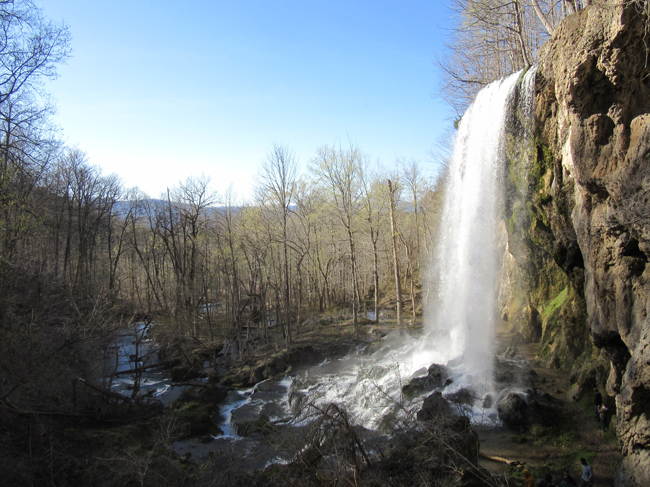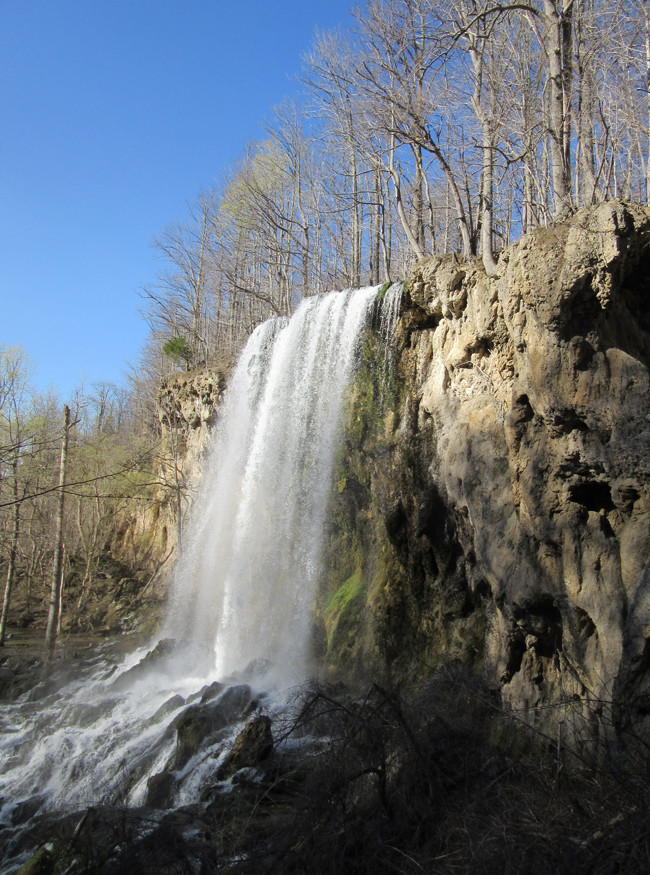15 April 2015
Spring time
Posted by Callan Bentley
This past weekend, I had a chance to visit Bath, Highland, and Alleghany Counties, Virginia, three amazingly beautiful places I had never before seen. I was tagging along on my colleague Rick Diecchio’s annual sedimentology & stratigraphy field trip for George Mason University. I was eager to learn from some awesome field sites from him in the year before he retires. We saw some terrific sedimentary rocks, of which more later.
More to the point of this post, the area is host to both some weird Eocene-aged igneous intrusions (unique in the Appalachian Valley & Ridge) as well as some unusual hot and warm springs, also unique along the length of the Appalachian mountain belt.
One of the warm springs in Warm Springs, Virginia, was developed into a couple of bath houses, one for men and one for women. They are charmingly derelict old UFO-shaped structures, preserved in roughly the form they were in when Thomas Jefferson soaked here (1819):

I’ve been meaning to see this place for myself for years, ever since I had an Honors student use the site as the basis for her final project.
We didn’t take time to take the waters ourselves, but moved on to a point of geological interest further to the south:



That’s Falling Springs Falls (no joke), and the impressive thing about it is not merely that it’s a six-storey waterfall, but that the entire waterfall edifice is travertine, actively being deposited by the calcite-saturated water, which derives its CaCO3 from its time percolating through Cambrian and Ordovician limestone strata below the surface. All the rock you see there is not the remnants of what is otherwise being eroded away (such as at places like Great Falls or Niagara Falls) but instead the opposite – new rock being laid down by the agitated water. This falls progrades over time – inverting the traditional conception of a waterfall’s relationship to its host landscape.
Thomas Jefferson described this site in his Notes on the State of Virginia (1781). The waterfall was mined for lime (for agricultural purposes) for many years, but is now a tourist site. Jefferson claimed the height of the falls as “200 feet” but today it’s more like 80 feet. This discrepancy may by explained due to the mining, perhaps. Above the falls, there are extensive travertine deposits rising to higher elevations – perhaps these were added into Jefferson’s calculations?
I’m not usually impressed by waterfalls (I mean, what else do you expect where water is pulled by gravity without any ground beneath it?) but this was striking. I’m glad to have seen it.


 Callan Bentley is Associate Professor of Geology at Piedmont Virginia Community College in Charlottesville, Virginia. He is a Fellow of the Geological Society of America. For his work on this blog, the National Association of Geoscience Teachers recognized him with the James Shea Award. He has also won the Outstanding Faculty Award from the State Council on Higher Education in Virginia, and the Biggs Award for Excellence in Geoscience Teaching from the Geoscience Education Division of the Geological Society of America. In previous years, Callan served as a contributing editor at EARTH magazine, President of the Geological Society of Washington and President the Geo2YC division of NAGT.
Callan Bentley is Associate Professor of Geology at Piedmont Virginia Community College in Charlottesville, Virginia. He is a Fellow of the Geological Society of America. For his work on this blog, the National Association of Geoscience Teachers recognized him with the James Shea Award. He has also won the Outstanding Faculty Award from the State Council on Higher Education in Virginia, and the Biggs Award for Excellence in Geoscience Teaching from the Geoscience Education Division of the Geological Society of America. In previous years, Callan served as a contributing editor at EARTH magazine, President of the Geological Society of Washington and President the Geo2YC division of NAGT.
So this is like the American Plitvice? Cool!
Sure, sort of.
The deposition of travertine in freshwater streams with significant CaCO3-saturated groundwater components isn’t unique to this site. We see it on Tumbling Run in the Shenandoah Valley, for instance, as well as more famous sites, such as the Little Colorado River, just above its confluence with the main Colorado River in the Grand Canyon. Plitvice seems to be another example of the same phenomenon: auto-catalyzed precipitation of calcite from solution. Uniformitarianism at its best!